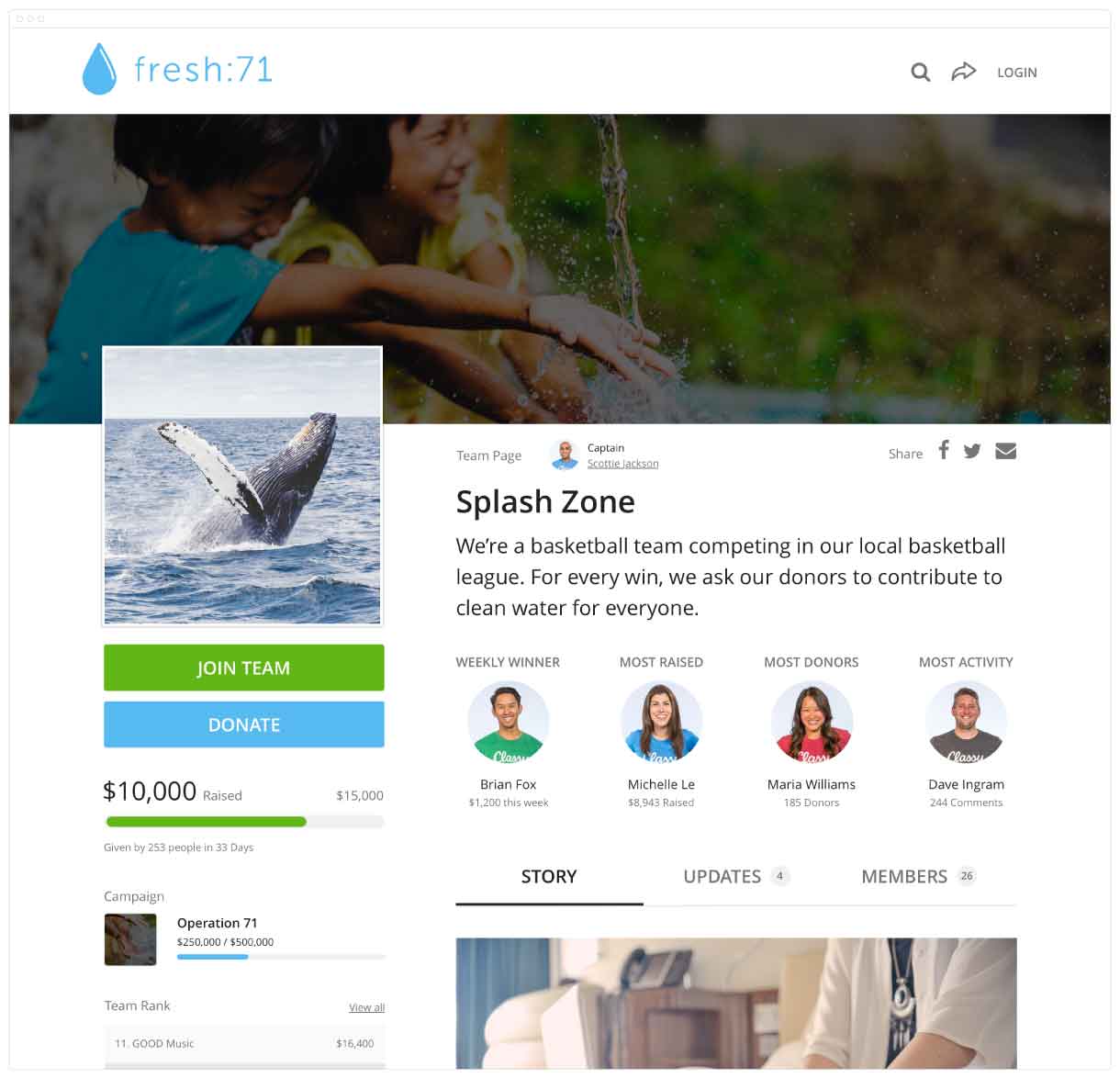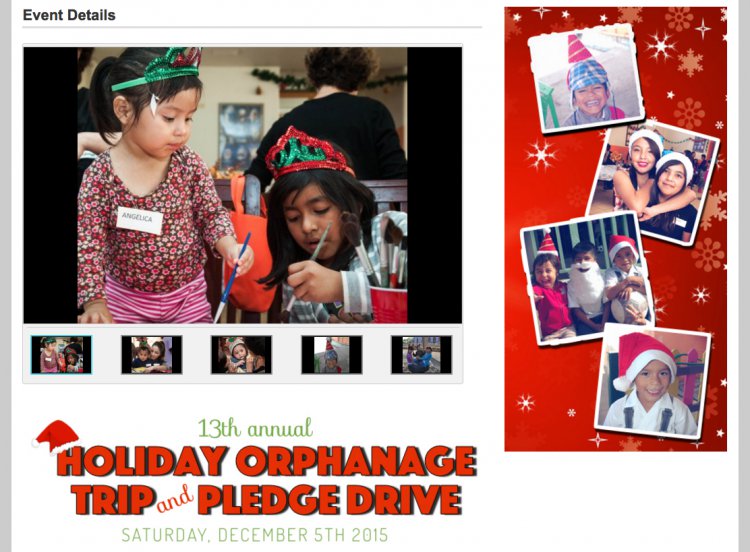5 Ways to Turn Volunteers Into Peer-to-Peer Fundraisers

Request a Demo
Learn how top nonprofits use Classy to power their fundraising.
Your nonprofit’s volunteers are an extension of your organization—a group of your most loyal supporters who dedicate their time and passion to your cause. A strong volunteer base has powerful implications for your organization. They can affordably supplement the work of your staff, gain your organization more visibility, and when given the opportunity, bring in a substantial stream of revenue. While you might traditionally consider a volunteer as someone who lends their time to your cause in person, peer-to-peer fundraising is another form of volunteering that can happen anywhere, regardless of your supporter’s location.
Volunteers are a powerful resource for your organization for several reasons.
1. They Are Passionate About Your Cause. Volunteers dedicate their time to causes close to their heart. Their peer-to-peer fundraising pages often include personal stories and their first-hand experience enables them to clearly speak about your organization’s impact. This adds an extra layer of donor trust and compels their community to give knowing they are helping their peer support a cause that is very important to them.
2. They’ve Built a Relationship With You. Your volunteers are already committed to your organization and are likely willing to give a little bit more than their time. They’ve not only formed an emotional connection with your cause but also with your staff.
3. They Have Expertise. If there is a group who can speak to your cause as deeply as your staff, it’s your volunteers. They know what you do, how you accomplish it, and the impact you’re making. This makes them well positioned to advocate for your cause.
Thirty six percent of respondents in a survey conducted by SSIR said they have felt compelled to give to a cause supported by their friends and family. Offer your volunteers the opportunity to make an even larger contribution to your cause. Use these five tips to demonstrate the powerful impact your volunteers could make as fundraisers.
Make it Easy
Creating a peer-to-peer fundraising page should be as simple and straightforward as possible. With the right software, you can eliminate the need for your volunteers to use other crowdfunding sites to create their fundraising page. With your own branded donation page, your volunteers will have access to edit and enhance their peer-to-peer page with a few simple clicks. Adding compelling images and videos is as simple as clicking a button, finding the file on their computer, and uploading. This branded tool will make them more successful because their page will appear more trustworthy as it is consistent with your organization’s look and feel.

Another benefit of having the right software is the ability to keep your messaging consistent. By providing fundraisers with message templates, you save them time and empower them to speak on your behalf to their audience. You can also craft social media messages they can post on Twitter (shorter in length), Facebook, and LinkedIn to promote their page.
To set your volunteers up for success, provide them with a peer-to-peer fundraising toolkit for their first campaign. Team Rubicon found that fundraisers who received a tip sheet raised three times as much as those who did not. Not sure what to include in your toolkit? No problem, we’ve created a free template for you to share with your supporters.
A good testimonial can go a long way to increase your number of fundraisers, especially if it comes from someone who has spent ample time working with your organization and can speak to the impact you create. A testimonial authenticates the peer-to-peer fundraising process by showcasing the positive experience of a third-party involved. An inspiring testimonial is so valuable, it can activate a volunteer to become peer-to-peer fundraiser.
Your supporters who have peer-to-peer fundraised before are the perfect candidates to provide a short testimonial about their experience. One way to get a quick yet meaningful testimonial from your fundraisers is to send an online survey or mini-poll via Facebook or Twitter soon after they’ve volunteered. Their experience will be top of mind and their positive memories will still be fresh.
Another way to share testimonials is to film a short video. In this video, instead of sharing testimonials from volunteers, consider featuring your beneficiaries. Donor Direct found that 75 percent of respondents want information about a charity’s achievements and impact before donating. This video can motivate your volunteers to help fundraise. It can also be used as a tool to encourage donations when fundraisers share it with their networks.
Give a Tour
The old adage “seeing is believing” holds true in many cases, particularly when it comes to asking for a supporter’s donation or support as a fundraiser. To truly allow your volunteers to get a full understanding of how your organization operates, they need to see the nitty-gritty of your day-to-day. What better way is there to show your supporters what goes on behind the scenes than to give them a tour of your office? A tour allows them to see first hand the hard work you put in on a daily basis and how donation dollars are put to good use.
However, not all of your volunteers may have the opportunity to physically visit your office. In order to give all of your volunteers this insider information about your organization, consider creating a virtual tour and sharing it with your volunteer base via an email campaign or on your website for all to see.
If your volunteers are local, invite them to bring their colleagues, friends, and family to tour your office. Introducing new individuals to your organization and the great work you accomplish could help you gain a new supporter, volunteer, or future fundraiser. In-person interactions also help build new relationships and foster existing relationships.
Pair It With Events
Your volunteers often dedicate their time to attend and work the events you host. Why not make it a requirement to peer-to-peer fundraise for these events? By setting this precedent, there is an expectation from the start that raising money is a vital component of the event’s success.
One organization that requires their volunteers to peer-to-peer fundraise for events is Corazon de Vida. Their annual Holiday Trip and Pledge Drive requires volunteers to donate or raise at least $100 to help feed the orphans they support. This trip is so popular that it requires four buses to accommodate all of the individuals who want to go. By setting the expectation from the start that volunteers must also be peer-to-peer fundraisers, Corazon de Vida’s Holiday Trip and Pledge Drive has been one of their most successful events for over 13 years.
Segment Your Volunteers
Impersonal mass communications can deter volunteers from giving their time and resources. Personalization is key. In fact, 94 percent of businesses say personalization is the driving force behind connecting people to their organization. It even contributes to their current and future success. Appeal to what your volunteers are most passionate about at your organization by segmenting your communications.
Segment your volunteer list by:
- Initiative. By segmenting your volunteers by initiative, you can appeal to their interests. Ask volunteers who have volunteered for a specific initiative to fundraise for that same program.
- Communication Frequency. You can determine how often a volunteer wishes to receive communications from your organization by sending a simple survey. Adhere to your volunteers’ wishes and only send communications as often as they indicate.
- Communication Method. Some people prefer to be reached by email. Others are more inclined to respond to a Facebook event invite. Determine which channels your volunteers prefer to be communicated through in order to improve your response rates.
- Commitment Level. It is important to truly understand your volunteers, down to how much time they dedicate on an annual basis. Those that regularly dedicate their time should be communicated to differently than those that volunteer at one event a year. Dedicated volunteers are your V.I.P.’s—your first-class customers. They deserve even more attention, personalized thank-you-calls, and consistent nurturing.
“Fundraisers are true evangelists for your cause. Provide opportunities for them to engage on an even deeper level. Challenge them, ask them to renew their fundraising efforts, and to do more.
As Sandler at City of Hope suggests, fundraisers are your organization’s super star supporters. Give them the tools they need, a little encouragement, and proof of the impact they’ve created. You too, can triple your donations like Team Rubicon. Now it’s your turn to start recruiting your volunteers to fundraise.
Photo Credit: Fort George G. Meade Public Affairs Office

The Guide to Courting Third-Party Donors
Subscribe to the Classy Blog
Get the latest fundraising tips, trends, and ideas in your inbox.
Thank you for subscribing
You signed up for emails from Classy
Request a Demo
Learn how top nonprofits use Classy to power their fundraising.



